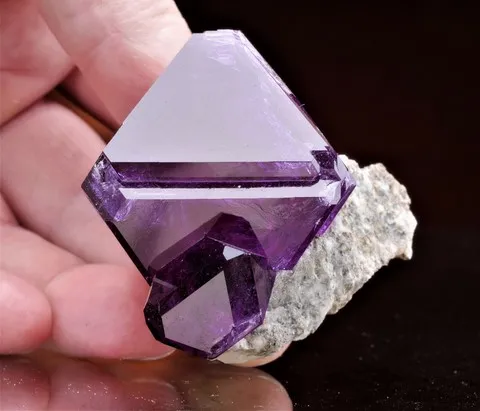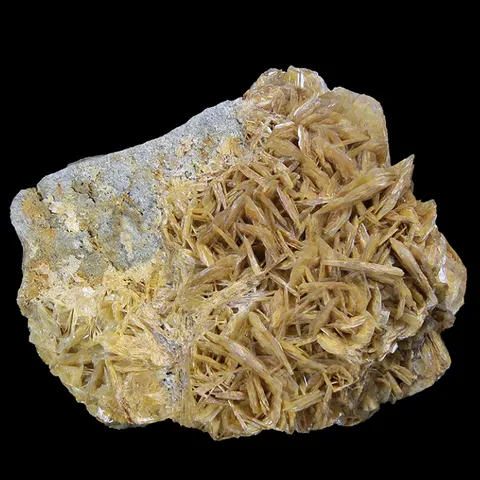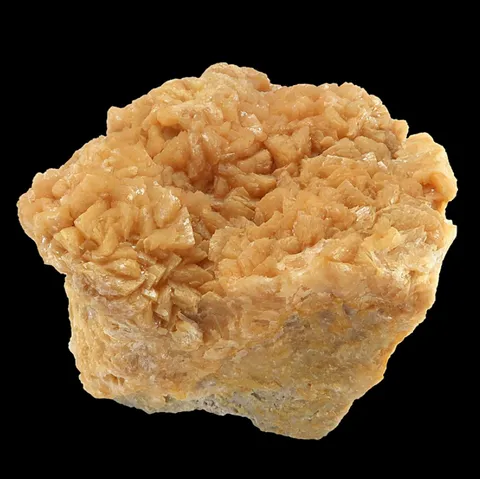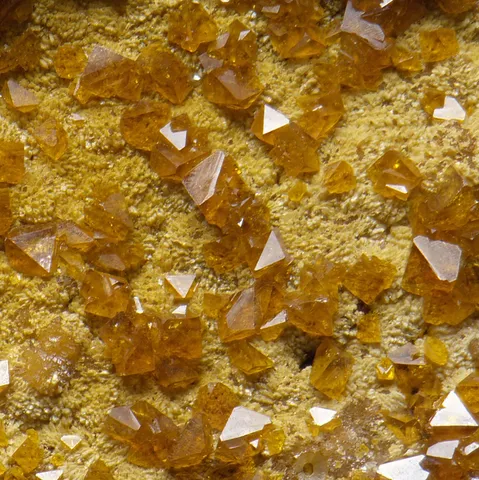ALUNITE
Class : Sulphates, chromates, molybdates
Subclass : Anhydrous sulphates
Crystal System : Trigonal
Chemistry : KAl3(SO4)2(OH)6
Rarity : Fairly common
Alunite is a crystallizing sulphate by the action of sulfuric acid on aluminous silicate rocks. The acid can come from volcanic fumaroles or hydrothermal fluids ; in the second case, the alunite is arranged in aureoles around the hydrothermal deposits. Its name comes from the Latin alumen, in reference to its chemical composition. Alunite is an acidic pH mineral that very rarely gives small rhombohedral, pseudocubic or tabular crystals, usually implanted on massive alunite. Usually alunite occurs in fine grained, earthy and sometimes fibrous masses, chalky in appearance and dull in luster. Its theoretically white color frequently evolves towards red or greenish blue by the addition of iron or copper compounds. Alunite is sometimes an important aluminum ore, when it is blue-green in color it has sometimes been used in jewelry : the "turquoise" of Navajo jewelry is thus often alunite.
Alunite in the World
Twinning
No twin known for this mineral species.
Fakes and treatments

Alunite cannot be synthesized, on the other hand we find on the market crystals of various colors sold under this name, most often purple, but which can also be colorless, red, green, etc... These crystals are alums of potassium crystallized in the laboratory on pieces of natural rock. Often there is unfortunately no mention of the synthetic nature of the object and these deceptions trap neophytes quite easily because of an attractive appearance. It is easy to produce potassium alum crystals at home by hot dissolving this powdered product in distilled water and then allowing the solution to cool. See our article on the alums.
Hardness : 3.5 to 4
Density : 2.6 to 2.9
Fracture : Irregular to conchoidal
Trace : White
TP : Translucent to transparent
RI : 1.572 to 1.592
Birefringence : 0.020
Optical character : Uniaxial +
Pleochroism : None
Fluorescence : White to orange
Solubility : Sulfuric acid
Magnetism : None
Radioactivity : None





